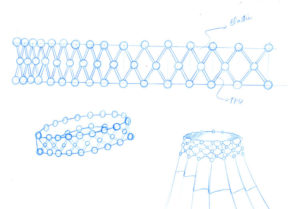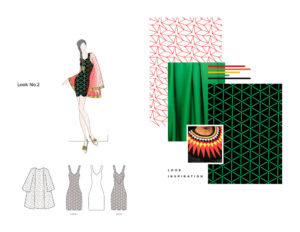 3D printing is often touted as the technology of the future. As it progresses, we will continue to see innovation and changes in manufacturing we simply never imagined. Nearly every industry is already seeing an impact though, whether minor or major, and designer Maria Alejandra Mora-Sanchez is quick to point out that she sees 3D printing as the future of fashion. We are listening to what the 2017 Red Dot Award winner has to say— as well as enjoying taking a look at her incredible new designs.
3D printing is often touted as the technology of the future. As it progresses, we will continue to see innovation and changes in manufacturing we simply never imagined. Nearly every industry is already seeing an impact though, whether minor or major, and designer Maria Alejandra Mora-Sanchez is quick to point out that she sees 3D printing as the future of fashion. We are listening to what the 2017 Red Dot Award winner has to say— as well as enjoying taking a look at her incredible new designs.
Mora-Sanchez was surprised to see such a lack of 3D printing in fashion as an industrial design intern and decided to make that the focus of her thesis. She worked with Cosine Additive to make some incredible 3D printed clothing patterns.
“The intent is to explore the possibilities of creating wearable ‘textiles’ with structures that are designed in relation to function and materialization through anatomy, movement and utility,” said Mora-Sanchez. “As far as additive manufacturing and the fashion industry are concerned they are mainly focused in accessories and conceptual sculptural pieces. However, these aren’t functional garments that adapt comfortably to the body and to human movement.”
 She shared the evolution of her project, beginning with mechanical components and weaving:
She shared the evolution of her project, beginning with mechanical components and weaving:
“During this stage I realized that mechanical components weren’t practical for wearables and that the functional mechanisms must be incorporated within the design integrity of the textile pattern,” explained Mora-Sanchez.
She began looking into auxetic patterns—those that stretch in what we would consider to be a counter-intuitive manner. In the case of this ready-to-wear collection, the patterns ‘expand under longitudinal strain and contract when compressed.’ This is definitely a departure from most fabrics available today, and Mora-Sanchez sees the innovative patterns as offering new value in form, function, and ‘geometric arrangement.’
- Auxetic patterns
- Material testing
The final result of all her studying and work with Cosine was the award-winning ‘Loom’ dress, able to transform due to body changes of the wearer, as well as adapting to any body types.
“Loom is an expandable, adaptable, wearable and flexible 3D printed dress,” states Mora-Sanchez. “It combines textiles and additive manufacturing by applying materials and auxetic structures that consider function and the human body.”
Although Mora-Sanchez originally dabbled in SLS printing for her patterns, ultimately she decided on FFF 3D printing due to benefits in speed, affordability, the large surface area, and more. She also discovered that as a 3D printing material, thermoplastic polyurethane offers a long list of benefits such as incredible elasticity and high resistance, low-temperature performance, and high shear strength.
“Testing took the most time and effort, but through each failure we became closer to our final TPU settings,” said Mora-Sanchez.
The patterns demonstrate improvement in shear modulus, indentation resistance, strength, and energy absorption. Mora-Sanchez states that in 3D printing her patterns with TPU she was also able to ‘enable porosity/permeability variation with strain’ as well as fabricating synclastic curvatures.
For more on this project, check out the information from Cosine, as well as more on what it takes to be a Red Dot winner here.
What do you think of this 3D printed dress? Let us know in the 3D Printed Loom Dress forum thread at 3DPB.com.
[Photos: David Vogel via Cosine Additive]Subscribe to Our Email Newsletter
Stay up-to-date on all the latest news from the 3D printing industry and receive information and offers from third party vendors.
You May Also Like
Profiling a Construction 3D Printing Pioneer: US Army Corps of Engineers’ Megan Kreiger
The world of construction 3D printing is still so new that the true experts can probably be counted on two hands. Among them is Megan Kreiger, Portfolio Manager of Additive...
US Army Corps of Engineers Taps Lincoln Electric & Eaton for Largest 3D Printed US Civil Works Part
The Soo Locks sit on the US-Canadian border, enabling maritime travel between Lake Superior and Lake Huron, from which ships can reach the rest of the Great Lakes. Crafts carrying...
Construction 3D Printing CEO Reflects on Being Female in Construction
Natalie Wadley, CEO of ChangeMaker3D, could hear the words of her daughter sitting next to her resounding in her head. “Mum, MUM, you’ve won!” Wadley had just won the prestigious...
1Print to Commercialize 3D Printed Coastal Resilience Solutions
1Print, a company that specializes in deploying additive construction (AC) for infrastructure projects, has entered an agreement with the University of Miami (UM) to accelerate commercialization of the SEAHIVE shoreline...




































